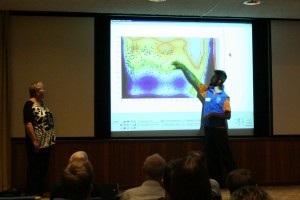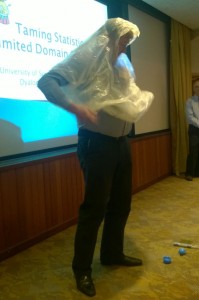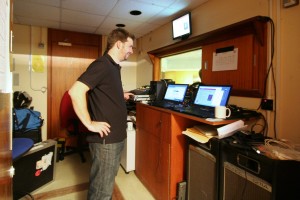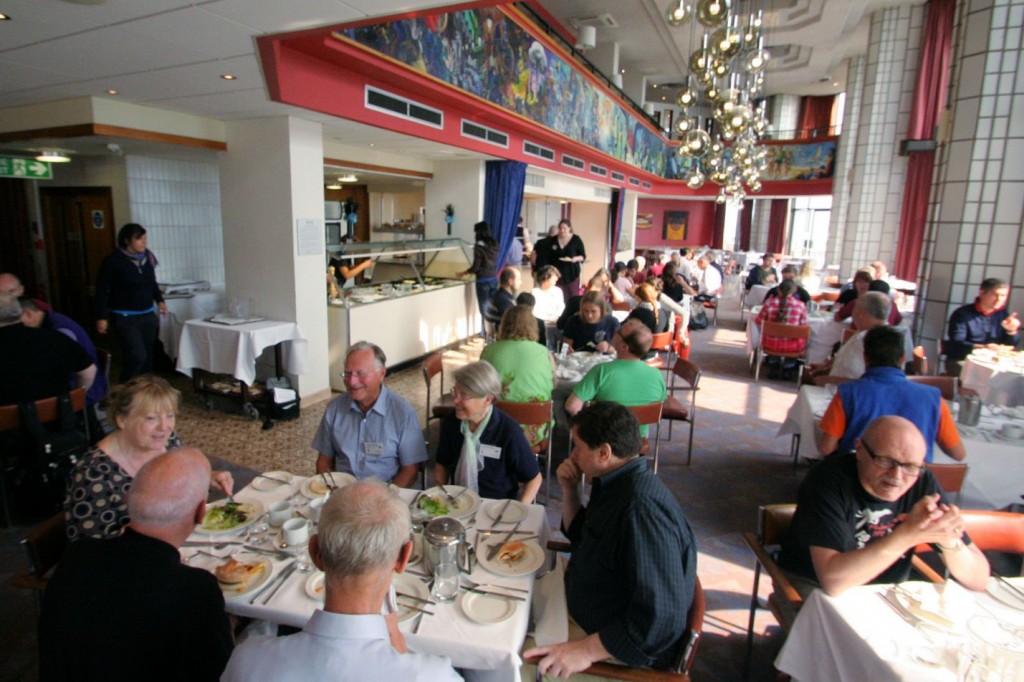This was originally posted to Catalyst PR’s Facebook page and is reproduced here to make it accessible to people who don’t have Facebook accounts.
For information on the presentations at Dyalog ’14, see http://www.dyalog.com/user-meetings/dyalog14.htm.
Maintainability
The first presentation I would like to highlight from today’s programme is by Gianfranco Alongi from Ericsson AB (Sweden). Those of you who read my posts from Dyalog ’13 last year will know that I am rather taken with Gianfranco’s approach to software development and, in particular, his insistence that it is a software programmer’s sole mission in life to leave a legacy (in the form of code) that is so simple and easy to understand that anyone who comes in later can pick up the ball and run with it, without having to re-invent the wheel and without risking destroying the application. Work smarter – not harder – is his mantra.
Gianfranco’s talk this year was called Let’s Talk about Maintainability!. The background for the talk is that any professional programmer obviously strives for maintainable code, well aware that an unmaintained codebase gradually transforms from a well-tended garden to a dark haunted forest that requires animal sacrifice if left to its own devices. Far too many systems have “that” piece of code – the unmaintained marsh, the mess that causes nausea and elevated blood pressure. Some people swear developers have lost parts of their souls in there and you can hear screaming if you work late enough for long enough…
During the talk Gianfranco explored some of the underlying mechanics of maintainability, presenting a definition of maintainability based on human cognition and sharing a language that might help when talking and reasoning about maintainability. Ultimately any programmer is responsible for maintaining the codebase; However, software entropy is real and we pay in blood, sweat and tears if we choose to ignore it. He insists – and quite rightly so – that maintainability is economics because the Cost of Change (CoC) goes up and up the longer a projects run and it’s measurable as it leads to smaller margins and ultimately smaller profit. Ultimately, you get to a point where it is no longer viable to throw more resources (more people or more overtime) into the mix, and you simply have to re-architect.
The psychology involved in software programming is fascinating! So is the shift from the days of programmers being proud of their ability to write code that other programmers may have difficulty understanding to a world where simplicity in the coding is the ultimate target – in order to address the increasing complexity in the applications.
Statistics
Stephen Mansour (PhD) has taught Statistics at the University of Scranton (U.S.A.) for the past 7 years. He is also working with The Carlisle Group – a company focused exclusively on creating software to support the fast growing mortgage and asset securitisation industry.
The Carlisle Group’s flagship product is CAS, a Collateral Analysis System highly specialised for global asset securitisation markets and used by participants in all facets of the mortgage business, including investment banks, commercial banks, accounting firms, bond insurers and loan originators.
Stephen’s presentation was named Taming Statistics with Limited-Domain Operators and took its offset in a new statistical package he has developed which is using Acre.
(Acre facilitates code management for APLers and was the subject of another talk today. Acre is available as open source software and can be downloaded for free from http://aplwiki.com/acre).
Asked why he felt there was a need for yet another stats package – after all, there are perfectly good packages available in the market, such as R, and even Excel has 87 stats functions, so what exactly is it that a stats package developed in APL can offer that the others can’t, the answer was: Defined Operators!
Stephen then demonstrated the new stats package by making some assumptions with regards to next year’s user meeting and the likelihood of the venue being over-subscribed (or not) based on a number of assumptions and relations.
The package does take advantage of the fact that R already connects into APL and Stephen ended the presentation by saying that the package is currently in beta. He is happy to share, so if you would like to review/try the new stats package please e-mail (Stephen.Mansour@scranton.edu) and specify whether you would like the R version or the native APL version.


 Follow
Follow



